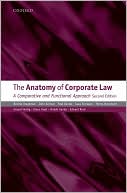Category Books
- Fiction Books & Literature
- Graphic Novels
- Horror
- Mystery & Crime
- Poetry
- Romance Books
- Science Fiction & Fantasy
- Thrillers
- Westerns
- Ages 0-2
- Ages 3-5
- Ages 6-8
- Ages 9-12
- Teens
- Children's Books
- African Americans
- Antiques & Collectibles
- Art, Architecture & Photography
- Bibles & Bible Studies
- Biography
- Business Books
- Christianity
- Computer Books & Technology Books
- Cookbooks, Food & Wine
- Crafts & Hobbies Books
- Education & Teaching
- Engineering
- Entertainment
- Foreign Languages
- Game Books
- Gay & Lesbian
- Health Books, Diet & Fitness Books
- History
- Home & Garden
- Humor Books
- Judaism & Judaica
- Law
- Medical Books
- New Age & Spirituality
- Nonfiction
- Parenting & Family
- Pets
- Philosophy
- Political Books & Current Events Books
- Psychology & Psychotherapy
- Reference
- Religion Books
- Science & Nature
- Self Improvement
- Sex & Relationships
- Social Sciences
- Sports & Adventure
- Study Guides & Test Prep
- Travel
- True Crime
- Weddings
- Women's Studies
The Anatomy of Corporate Law: A Comparative and Functional Approach »

Authors: Reinier Kraakman, Paul Davies, Henry B. Hansmann, Gérard Hertig, Klaus J. Hopt
ISBN-13: 9780199565832, ISBN-10: 019956583X
Format: Hardcover
Publisher: Oxford University Press, USA
Date Published: September 2009
Edition: (Non-applicable)
Author Biography: Reinier Kraakman
Reinier Kraakman is Ezra Ripley Thayer Professor of Law at Harvard Law School. John Armour is Lovells Professor of Law and Finance at the University of Oxford. Paul Davies is Cassel Professor of Commercial Law at the London School of Economics and Political Science. Luca Enriques is Professor of Business Law at the University of Bologna, and a Commissioner of Consob. Henry Hansmann is Augustus E. Lines Professor of Law at Yale Law School. Gérard Hertig is Professor of Law, ETH, Zurich. Klaus J. Hopt is Director of the Max Planck Institute of Foreign Private and Private International Law. Hamburg Hideki Kanda is Professor of Law, University of Tokyo. Edward B. Rock is Saul A. Fox Distinguished Professor of Business Law, and Co-Director of the Institute for Law & Economics, University of Pennsylvania.
Book Synopsis
This is the long-awaited second edition of this highly regarded comparative overview of corporate law. This edition has been comprehensively updated to reflect profound changes in corporate law. It now includes consideration of additional matters such as the highly topical issue of enforcement in corporate law, and explores the continued convergence of corporate law across jurisdictions.
The authors start from the premise that corporate (or company) law across jurisdictions addresses the same three basic agency problems: (1) the opportunism of managers vis-à-vis shareholders; (2) the opportunism of controlling shareholders vis-à-vis minority shareholders; and (3) the opportunism of shareholders as a class vis-à-vis other corporate constituencies, such as corporate creditors and employees. Every jurisdiction must address these problems in a variety of contexts, framed by the corporation's internal dynamics and its interactions with the product, labor, capital, and takeover markets. The authors' central claim, however, is that corporate (or company) forms are fundamentally similar and that, to a surprising degree, jurisdictions pick from among the same handful of legal strategies to address the three basic agency issues.
This book explains in detail how and why the principal European jurisdictions, Japan, and the United States sometimes select identical legal strategies to address a given corporate law problem, and sometimes make divergent choices. After an introductory discussion of agency issues and legal strategies, the book addresses the basic governance structure of the corporation, including the powers of the board of directors and the shareholders meeting. It proceeds to creditor protection measures, related-party transactions, and fundamental corporate actions such as mergers and charter amendments. Finally, it concludes with an examination of friendly acquisitions, hostile takeovers, and the regulation of the capital markets.
Table of Contents
| List of Authors | ||
| 1 | What is Corporate Law? | 1 |
| 2 | Agency Problems and Legal Strategies | 21 |
| 3 | The Basic Governance Structure | 33 |
| 4 | Creditor Protection | 71 |
| 5 | Related Party Transactions | 101 |
| 6 | Significant Corporate Actions | 131 |
| 7 | Control Transactions | 157 |
| 8 | Issuers and Investor Protection | 193 |
| 9 | Beyond the Anatomy | 215 |
| Index | 227 |
Subjects
 Business & Commercial Law
Business & Commercial Law  Corporation Law - General & Miscellaneous
Corporation Law - General & MiscellaneousLaw
 Business, Commercial & Financial Law
Business, Commercial & Financial Law  Corporation Law - General & Miscellaneous
Corporation Law - General & MiscellaneousNonfiction
 Law
Law  Business, Commercial & Financial Law
Business, Commercial & Financial LawNonfiction
 All Nonfiction
All Nonfiction  Business, Commercial & Financial Law
Business, Commercial & Financial LawPolitical Books & Current Events Books
 Law
Law  Business, Commercial & Financial Law
Business, Commercial & Financial Law
